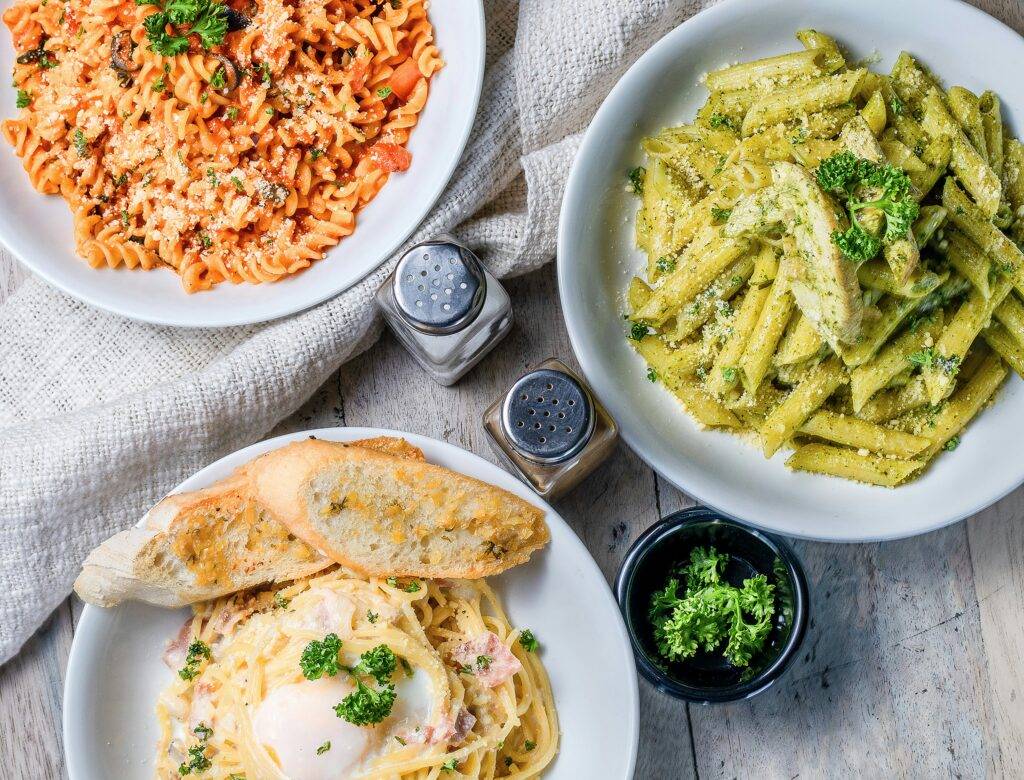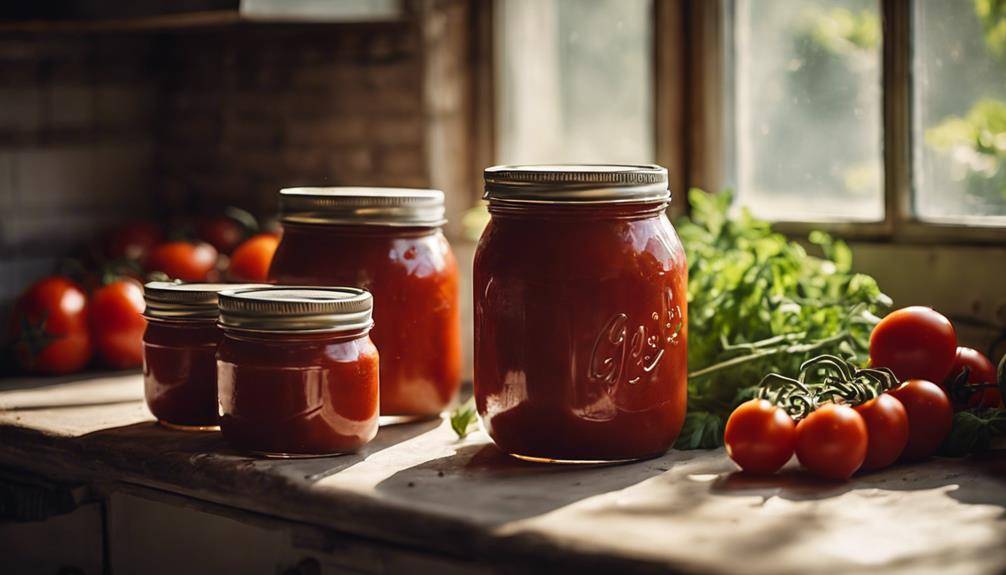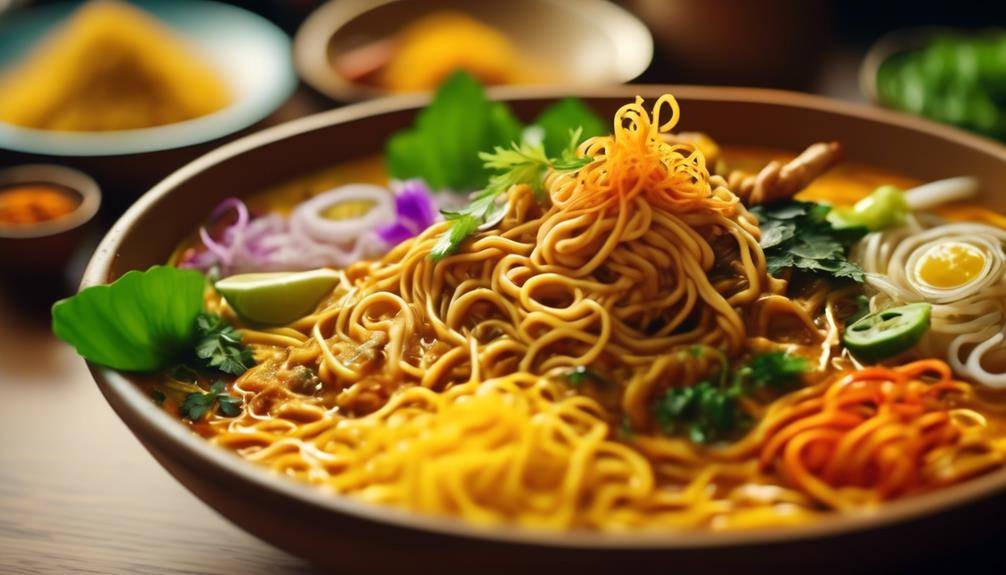Exploring the Rich Amazing Tapestry of Italian Cuisines

Italian Cuisines is Italy, a land synonymous with art, history, and romance, is also a haven for culinary enthusiasts. The country’s diverse regions boast distinct culinary traditions that have given rise to iconic dishes, celebrated wines, and a vibrant street food culture. Join us on a delectable journey through Italy as we explore its regional specialties, signature dishes, and the hidden gems that make Italian cuisine a global sensation.
Regional Specialties: A Culinary Journey Through Italy’s Diverse Flavors
Italy, a gastronomic paradise, unfolds a tapestry of regional specialties, each contributing a unique chapter to the nation’s rich culinary narrative. From the rustic landscapes of Emilia-Romagna to the sun-kissed shores of Sicily, these regional delights showcase the diversity of ingredients, techniques, and traditions that define Italian cuisine.
Emilia-Romagna:
The Heart of Flavor Known as the gastronomic capital of Italy, Emilia-Romagna is a treasure trove of indulgent delights. Balsamic vinegar from Modena, Parmigiano Reggiano cheese, and Prosciutto di Parma are emblematic of this region’s culinary prowess. Indulge in the decadence of creamy risotto, silky handmade pasta like tagliatelle al ragù (Bolognese sauce), and the iconic tortellini enrobed in rich broths. Emilia-Romagna is a celebration of the art of pasta-making and the time-honored craft of curing meats and producing world-renowned cheeses.
Sicily:
Seafood Sensations Sicily, surrounded by the Mediterranean, offers a bounty of seafood delights. Delve into dishes like Pasta con le Sarde (pasta with sardines), showcasing the island’s love affair with fresh catch and bold flavors. Arancini, golden-fried rice balls, and Caponata, a savory-sweet eggplant relish, provide a taste of Sicily’s diverse street food culture. Sicilian desserts, such as cannoli and cassata, weave a sweet narrative of Arab and Norman influences, reflecting the island’s rich history.
Tuscany:
Simplicity and Elegance Tuscany, with its undulating hills and charming vineyards, embraces a cuisine that is both simple and elegant. Dive into ribollita, a hearty vegetable soup, and pappa al pomodoro, a rustic tomato and bread soup. Tuscan olive oil, celebrated for its robust flavor, enhances dishes like bruschetta and panzanella. Indulge in bistecca alla fiorentina, a succulent T-bone steak grilled to perfection. Tuscany’s culinary landscape mirrors its art and architecture—timeless, refined, and deeply rooted in tradition.
Veneto:
A Feast of the Adriatic Veneto, with its picturesque canals and vibrant markets, boasts a cuisine that mirrors its stunning surroundings. Risotto al nero di seppia, a black squid ink risotto, captures the essence of Venetian seafood traditions. Cicchetti, small bites served in Venetian bacari (bars), offer a tantalizing array of flavors, from marinated seafood to creamy polenta with salted cod. Sip on a glass of Prosecco, Veneto’s sparkling pride, as you savor the region’s culinary delights.
Campania:
Naples and Beyond Campania, home to Naples and the Amalfi Coast, presents a medley of bold and vibrant flavors. Pizza Margherita, born in Naples, showcases the simplicity of fresh tomatoes, mozzarella, and basil. Indulge in spaghetti alle vongole, a pasta dish adorned with succulent clams, and savor sfogliatella, a flaky pastry filled with ricotta and citrus. Campania’s cuisine, deeply rooted in tradition, reflects the sun-soaked landscapes and coastal abundance of the region.
Embarking on a journey through Italy’s regional specialties is like traversing a culinary mosaic, each piece contributing to the overall masterpiece. From the indulgent offerings of Emilia-Romagna to the sun-soaked flavors of Sicily, the simplicity of Tuscany, the seafood feasts of Veneto, and the vibrant dishes of Campania, every region paints a unique picture of Italy’s diverse gastronomic heritage. As you explore these culinary landscapes, you’ll discover that each dish tells a story—a tale of history, tradition, and the enduring love affair between Italians and their food.
Signature Dishes: Unraveling the Culinary Tapestry of Italy
Italy, a culinary maestro, orchestrates a symphony of flavors through its iconic signature dishes. These gastronomic delights, cherished worldwide, reflect the artistry and passion embedded in Italian cuisine. Let’s delve into the heart of Italy’s culinary identity, exploring the origins, variations, and secrets behind some of its most beloved creations.
Pasta Varieties:
The Soul of Italian Cuisine Pasta, a culinary icon synonymous with Italy, boasts a myriad of varieties, each with its unique texture and flavor. Spaghetti, the quintessential pasta, takes center stage in classic dishes like Spaghetti Bolognese, where a rich meat sauce adorns perfectly al dente strands. Lasagna, a layered masterpiece of pasta, ricotta, and savory Bolognese, exemplifies the indulgence and complexity of Italian comfort food. Ravioli, delicate pockets of pasta filled with ricotta or spinach, showcase the meticulous craftsmanship that goes into handmade pasta.
Pizza:
A Culinary Canvas Pizza, an international sensation, finds its roots in the humble streets of Naples. The Margherita, a masterpiece of simplicity with tomato, mozzarella, and basil, pays homage to Queen Margherita of Savoy. The Neapolitan pizza, with its thin, chewy crust and flavorful toppings, embodies the essence of authentic Italian pizza-making. Explore variations like the Roman-style pizza with a thin, crispy crust or the hearty Sicilian pizza, characterized by its thick, doughy base.
Risotto:
Creamy Elegance from the North Hailing from the northern regions of Italy, risotto is a culinary canvas for creativity and refinement. Arborio or Carnaroli rice, cooked to creamy perfection, forms the base for a myriad of flavor infusions. Risotto alla Milanese, with saffron and Parmesan, exemplifies the elegance of Lombardy’s culinary tradition. Seafood risotto from Veneto showcases the region’s bounty from the Adriatic, while mushroom risotto celebrates the earthy flavors of Piedmont.
Tiramisu:
A Sweet Symphony in Every Bite Tiramisu, a decadent dessert that translates to “pick me up,” is a triumph of flavors and textures. Layers of coffee-soaked ladyfingers, mascarpone cheese, and a dusting of cocoa create a luscious symphony of sweetness. Originating from the Veneto region, Tiramisu has become a global favorite, embodying the perfect marriage of creamy indulgence and robust espresso.
Cannoli:
Sweet Tubes of Sicilian Delight Sicily’s gift to the dessert world, cannoli, is an irresistible treat with a crispy shell and a creamy ricotta filling. These sweet tubes, often adorned with pistachios or chocolate, offer a delightful contrast of textures and flavors. Whether enjoyed on the streets of Palermo or crafted at home, cannoli encapsulates the essence of Sicilian sweetness.
Italy’s signature dishes are not merely meals; they are culinary masterpieces that transcend taste to evoke emotions, memories, and a deep appreciation for the country’s gastronomic heritage. Each dish tells a story of tradition, craftsmanship, and the enduring love affair between Italians and their cuisine. As you savor these iconic flavors, you embark on a journey through the heart and soul of Italy’s culinary landscape—a journey that celebrates the art of good food, shared moments, and the vibrant tapestry of Italian life.
Wine and Food Pairing: A Symphony of Italian Flavors
In the picturesque vineyards and rolling hills of Italy, the art of wine and food pairing is not just a science; it’s a symphony that harmonizes flavors, elevating the dining experience to new heights. Italian wines, celebrated globally for their diversity and complexity, find their perfect counterparts in the rich tapestry of Italian cuisine.
Famous Wine Regions:
Italy boasts an array of renowned wine regions, each contributing distinctive varietals to the global wine landscape. Tuscany, with its iconic Chianti and Brunello di Montalcino, offers robust reds that pair exquisitely with hearty dishes. The Piedmont region, home to Barolo and Barbaresco, presents powerful reds that complement the region’s truffle-infused specialties. From the sparkling Prosecco of Veneto to the complex Amarone of Veneto, each region has its vinous gems, reflecting the diverse terroir of the Italian peninsula.
Pairing Principles:
Italian cuisine, characterized by its regional diversity, provides a canvas for creative wine pairings. The guiding principle is to balance the intensity of both wine and food, creating a harmonious marriage of flavors. Lighter wines, such as Pinot Grigio, are perfect companions for delicate seafood dishes from coastal regions. Robust reds, like Sangiovese or Nebbiolo, stand up to the bold flavors of pasta Bolognese or hearty stews. The effervescence of sparkling wines, like Prosecco, can cut through the richness of fried delicacies or creamy risottos.
Exploring Varietal Characteristics:
Understanding the characteristics of Italian grape varietals enhances the art of pairing. Sangiovese, with its bright acidity and red fruit notes, complements tomato-based dishes like Margherita pizza or spaghetti marinara. The velvety texture and dark fruit flavors of Nero d’Avola find a perfect match in the earthy notes of eggplant Parmesan. The herbal and floral nuances of Vermentino create a refreshing contrast to seafood antipasti.
Guidance for Home Enthusiasts:
For those exploring Italian wine and food pairing at home, the key is experimentation. Begin with the basics—white wines with lighter fare, red wines with heartier dishes. However, don’t hesitate to venture into unconventional territory. A crisp Verdicchio might surprise as an accompaniment to pesto dishes, while a Barbera can offer a delightful counterpoint to cured meats on an antipasto platter.
In the world of Italian wine and food pairing, there are no strict rules, only endless possibilities. It’s a journey of discovery, an exploration of regional nuances and grape varietal characteristics. As you raise your glass to toast the flavors of Italy, remember that each sip and each bite is an invitation to savor the rich heritage and culinary artistry that make Italian dining an unparalleled experience. Cheers to the symphony of flavors that dance on your palate, celebrating the marriage of impeccable wines and iconic Italian dishes.
Cooking Techniques: Unveiling the Artistry of Italian Culinary Craftsmanship
In the heart of Italian kitchens, where tradition meets innovation, a symphony of cooking techniques plays a crucial role in crafting the country’s iconic dishes. From the art of handmade pasta to the slow-cooked perfection of sauces, each technique is a testament to the precision, patience, and passion that define Italian culinary craftsmanship.
Handmade Pasta:
Crafting Edible Art The art of making pasta by hand is a time-honored tradition passed down through generations. From the rhythmic kneading of the dough to the delicate shaping of each noodle, handmade pasta reflects the dedication to preserving authenticity. Whether it’s the intricate folds of agnolotti or the simplicity of orecchiette, the tactile connection to the ingredients and the mastery of technique elevate each dish.
Perfecting Risotto:
Patience Rewarded Risotto, the creamy rice dish that embodies northern Italian comfort, demands patience and attention to detail. The slow addition of broth, constant stirring, and the careful monitoring of the rice’s texture are essential steps in achieving the desired creamy consistency. This technique, rooted in the kitchens of Lombardy and Veneto, showcases the importance of time and precision in creating a dish of unparalleled elegance.
Sauces from Scratch:
Building Flavor Layers Italian cuisine is renowned for its rich, flavorful sauces, and the art of creating them from scratch is a cornerstone of culinary excellence. Whether it’s a slow-simmered ragù for pasta or a vibrant tomato sauce for pizza, the technique involves coaxing out the essence of each ingredient. The marriage of fresh tomatoes, aromatic herbs, and a splash of olive oil in a well-crafted sugo is a celebration of simplicity and technique.
Perfecting Pizza Dough:
A Mastery of Yeast and Flour The mastery of pizza dough is an essential skill in Italian kitchens, where achieving the perfect balance of crispiness and chewiness is an art. From Naples to Rome, the technique of working with yeast, flour, and water transforms simple ingredients into the foundation of a beloved culinary creation. Whether it’s the thin and pliable Neapolitan crust or the robustness of a Roman-style base, the technique lies in the hands of skilled pizzaiolos.
Seafood Mastery:
Cooking the Catch of the Day Coastal regions of Italy boast a bounty of fresh seafood, and the mastery of cooking the catch of the day is a revered skill. Grilling, baking, or poaching, each technique is tailored to highlight the delicate flavors of the sea. From Sicilian grilled sardines to Venetian seafood risotto, the techniques vary but share a common goal: letting the natural essence of seafood shine.
Italian cooking techniques are an intricate dance between tradition and innovation, where the hands that knead, stir, and simmer carry the legacy of centuries. Each gesture, each perfected technique, is a nod to the culinary artisans who have shaped Italy’s gastronomic landscape. As you explore these methods in your own kitchen, you embark on a journey to unlock the secrets of Italian culinary craftsmanship, savoring not just the flavors but the essence of a culinary heritage handed down through generations.
Italian Street Food: A Culinary Journey through the Vibrant Streets of Italy
In the bustling streets of Italy, where the scent of simmering sauces and freshly baked bread wafts through the air, street food is more than a quick bite – it’s a sensory celebration of flavors, aromas, and the lively spirit of Italian culture. From the cobblestone alleys of Rome to the seaside promenades of Naples, Italian street food is a diverse tapestry that reflects regional influences, culinary creativity, and a love for on-the-go indulgence.
Arancini:
Sicily’s Portable Delight Hailing from the sunny island of Sicily, arancini are golden orbs of delight that capture the essence of Italian street food. These deep-fried rice balls, often stuffed with ragù, mozzarella, and peas, offer a crispy exterior that gives way to a flavorful, cheesy interior. The name “arancini” (meaning “little oranges”) nods to their round shape, resembling the citrus fruits so abundant in Sicily.
Panzerotti:
Puglia’s Pockets of Joy Venture to the southern region of Puglia, and you’ll encounter panzerotti, a fried or baked turnover that encapsulates the simplicity and deliciousness of Italian street fare. These crescent-shaped delights are typically filled with tomato sauce, mozzarella, and sometimes other ingredients like ham or olives. The result is a handheld package of warm, gooey goodness that satisfies cravings on the move.
Supplì:
Roman Rice Croquettes In the eternal city of Rome, supplì reign supreme as a popular street snack. These rice croquettes are crafted from risotto, often with a core of melted mozzarella. Coated in breadcrumbs and deep-fried to a crispy perfection, supplì offer a delightful contrast between the crunchy exterior and the creamy, cheesy interior. Romans often enjoy them as a quick, savory treat between errands.
Pizza al Taglio:
Slices of Roman Ingenuity While pizza may be a global phenomenon, in Rome, it takes on a distinctive form as pizza al taglio. This “pizza by the slice” is baked in rectangular trays, allowing customers to purchase slices of various flavors. From classic margherita to inventive toppings like zucchini flowers or porchetta, pizza al taglio reflects the diversity and adaptability of Italian street food.
Fritto Misto:
Coastal Crispy Medley Coastal towns like Naples offer a delightful medley of fried seafood known as fritto misto. From calamari to shrimp and small fish, this crispy seafood platter showcases the bounty of the Mediterranean. Dipped in a light batter and fried to perfection, fritto misto embodies the seaside spirit, offering a taste of the ocean with every crunchy bite.
Gelato:
Sweet Perfection on a Cone No exploration of Italian street food is complete without a mention of gelato. While not exclusive to the streets, gelato shops are integral to the urban landscape. With a dizzying array of flavors, from classic stracciatella to innovative combinations like fig and honey, gelato stands invite locals and visitors alike to savor the sweet side of Italian street culture.
Italian street food is more than a culinary experience; it’s a dynamic showcase of regional specialties, culinary creativity, and the convivial spirit of Italian life. As you navigate the lively streets, each bite of arancini, panzerotti, or a slice of pizza al taglio becomes a flavorful journey, connecting you to the vibrant tapestry of Italy’s street food culture. So, whether you’re strolling through historic alleys or seaside promenades, be sure to indulge in the diverse and delectable world of Italian street food.
Culinary Festivals and Events:
Immerse yourself in the festive spirit of Italy through its numerous food festivals and events. From truffle celebrations to olive oil extravaganzas, these gatherings showcase the best of Italian ingredients and culinary craftsmanship. Join the revelry and bring a taste of these vibrant events to your table.
Cheese and Antipasto: A Symphony of Italian Flavors
Delve into the exquisite world of Italian cheeses and antipasto, where every bite is a celebration of regional craftsmanship and culinary artistry. In Italy, the tradition of crafting and savoring cheese has deep roots, with each region boasting its own unique varieties that reflect the local terroir.
Regional Cheeses:
Begin your journey with a tour of Italy’s diverse cheese landscape. In the northern regions, savor the creamy indulgence of Taleggio and the crumbly goodness of Grana Padano. Travel south to Campania, where the iconic buffalo milk mozzarella reigns supreme, its silky texture and delicate flavor a testament to the richpastures of the region. Move further to Puglia to discover the robust and sharp notes of Canestrato, a sheep’s milk cheese that perfectly encapsulates the terroir of the Southern Italian countryside.
Cured Meats and Salumi:
No antipasto platter is complete without an array of cured meats, or salumi. Explore the world of prosciutto, whether it’s the renowned Prosciutto di Parma from Emilia-Romagna or the savory Prosciutto Toscano hailing from Tuscany. Dive into the spicy kick of Calabrese salami or the herbal nuances of finocchiona, a Tuscan salami infused with fennel.
Pickled Vegetables and Olives:
Antipasto is a harmonious medley of flavors, and pickled vegetables play a crucial role in this symphony. Revel in the tanginess of giardiniera, a pickled vegetable mix that varies from region to region. Enjoy the bite of pickled artichokes, a delicacy from the Roman countryside, or the briny perfection of Sicilian olives.
Art of Assembling Antipasto:
Crafting the perfect antipasto platter is an art form. It’s about balance—balancing textures, flavors, and colors. Arrange a mosaic of cheeses, meats, and pickled delights, ensuring each element complements the others. Add a drizzle of the finest extra virgin olive oil, a sprinkle of fresh herbs, and perhaps a balsamic glaze for that extra touch of sophistication.
Cheese and antipasto in Italian cuisine are not just a prelude; they are an overture to a grand culinary experience. With each bite, you embark on a sensory journey through Italy’s diverse landscapes and culinary traditions. Whether enjoyed with a glass of wine or as a prelude to a more elaborate meal, the artful arrangement of cheeses, cured meats, and pickled vegetables captures the essence of Italy’s rich gastronomic heritage. As you savor the flavors of your antipasto, you are not just tasting food—you are savoring a piece of Italy’s soul.
Culinary Traditions: A Tapestry of Family and Celebration
In the heart of Italian cuisine lies a tapestry of culinary traditions woven with threads of familial bonds, celebration, and cultural significance. Understanding these traditions unveils not just the art of cooking but the essence of Italian life itself.
Sunday Family Dinners:
At the core of Italian culinary traditions is the revered Sunday family dinner. It is not just a meal; it’s a ritual, a sacred time when generations gather around a table laden with love and homemade delights. Nonnas (grandmothers) take center stage, passing down cherished recipes—secrets whispered through the ages. The aroma of slow-cooked sauces and the laughter echoing through the kitchen create an ambiance where food transcends mere sustenance; it becomes a conduit for connection and shared history.
Traditional Holiday Meals:
Holidays in Italy are synonymous with feasts that honor centuries-old customs. From the hearty Christmas Eve Feast of the Seven Fishes to the joyous Easter celebrations filled with lamb, artisanal breads, and sweet delicacies, each holiday has its culinary repertoire. The preparation of these meals often involves the entire family, with each member contributing a dish, ensuring a collaborative effort that mirrors the unity and togetherness intrinsic to Italian culture.
Significance of Certain Dishes:
Certain dishes hold profound cultural and historical significance. Take, for instance, the symbolic importance of pasta in Italian cuisine. Beyond its delicious taste, pasta represents a connection to the land and the simplicity of life. Each region boasts its pasta shapes, each with a story to tell. In the North, the intricate twists of tortellini embody love and romance, while the Southern orecchiette captures the essence of abundance and fertility.
Legacy of Culinary Techniques:
Italian culinary traditions are not just about recipes; they’re about techniques passed down through generations. Handmade pasta, slow-simmered sauces, and the art of perfect risotto are not just skills; they’re legacies. The hands that roll gnocchi or shape orecchiette tell a story—a story of resilience, resourcefulness, and a deep connection to the land.
In the rich tapestry of Italian culinary traditions, every dish is a chapter, and every meal is a story. It’s a narrative of shared experiences, passed down from nonnas and nonnos to sons and daughters, creating a bond that transcends time. As you savor the flavors of Italy, you’re not just indulging in a meal; you’re participating in a centuries-old tradition, becoming a part of a culinary legacy that continues to thrive and evolve.
Ingredient Spotlights:
Shine a spotlight on key ingredients that form the backbone of Italian cuisine. From the golden richness of olive oil to the aromatic freshness of herbs, the plump juiciness of tomatoes, and the diverse world of pasta, explore tips on selecting quality ingredients and using them authentically in your own Italian-inspired dishes.
Hidden Gems: Unveiling the Culinary Treasures of Italy
Beyond the well-trodden paths and renowned dishes lies a world of hidden gems, culinary treasures that reveal the depth and diversity of Italy’s gastronomic landscape. These unsung heroes, often overlooked by guidebooks, are the heartbeat of local communities, offering an authentic taste of tradition, innovation, and the pure joy of discovery.
Lesser-Known Regional Delights
One of Italy’s best-kept secrets is its rich tapestry of regional cuisines. While many are familiar with the staples of northern, central, and southern Italy, each region boasts unique specialties waiting to be uncovered. From Friuli’s frico, a crispy cheese and potato dish, to Molise’s cavatelli with saffron and sausage, these regional delicacies showcase the incredible diversity that defines Italian gastronomy.
Off-the-Beaten-Path Trattorias
Escape the tourist-heavy districts and venture into the local trattorias tucked away in narrow alleys or quiet piazzas. These unassuming eateries, cherished by locals, offer a taste of home-cooked goodness. Sample dishes like cacio e pepe in a tucked-away Roman osteria or discover the perfect porchetta sandwich in a small Umbrian village. In these hidden trattorias, authenticity and flavor take center stage.
Secret Culinary Festivals
While the major food festivals draw crowds, Italy harbors numerous secret culinary celebrations that cater to the discerning food enthusiast. Imagine stumbling upon a truffle fair in the Piedmont woods, where locals share their prized fungi, or a wine festival in the vineyard-covered hills of Tuscany. These intimate gatherings provide a unique opportunity to engage with locals, learn about their culinary traditions, and savor rare, seasonal delights.
Under-the-Radar Local Markets
In the heart of many Italian cities, lesser-known markets offer an authentic shopping experience away from the bustling crowds. These local markets, known to residents but often missed by tourists, boast fresh produce, artisanal cheeses, and handmade pastas. Wander through the stalls, strike up conversations with vendors, and discover the true essence of Italian gastronomy in these hidden market gems.
Family-Run Pasticcerias and Gelaterias
While world-famous gelaterias and pasticcerias abound, the true connoisseur seeks out family-run establishments with recipes passed down through generations. These hidden gems offer a glimpse into the soul of Italian sweets, from the perfect cannoli in a Sicilian pasticceria to a secret gelateria in Florence serving up the creamiest stracciatella. Discovering these family-run establishments is like uncovering a personal invitation to savor the best-kept secrets of Italian dessert traditions.
Exploring Italy’s hidden culinary gems is not just a journey for the taste buds; it’s a passage into the soul of a nation deeply rooted in its gastronomic traditions. Whether it’s the regional specialties, local trattorias, secret festivals, under-the-radar markets, or family-run sweet shops, these hidden gems are the key to unlocking the true essence of Italian cuisine. As you embark on your culinary adventure, let curiosity be your guide, and savor the joy of discovering the delicious secrets that make Italy a timeless treasure trove for food enthusiasts.
Conclusion: Italian Cuisines
As we conclude our journey through the flavors of Italy, we find that Italian cuisine is a tapestry woven with threads of tradition, innovation, and regional pride. From the rustic kitchens of Tuscany to the bustling streets of Sicily, each region contributes to the symphony of tastes that make Italian food a perennial favorite. May this exploration inspire you to recreate the magic of Italy in your own kitchen and share the joy of its culinary heritage with family and friends. Buon viaggio culinario!








